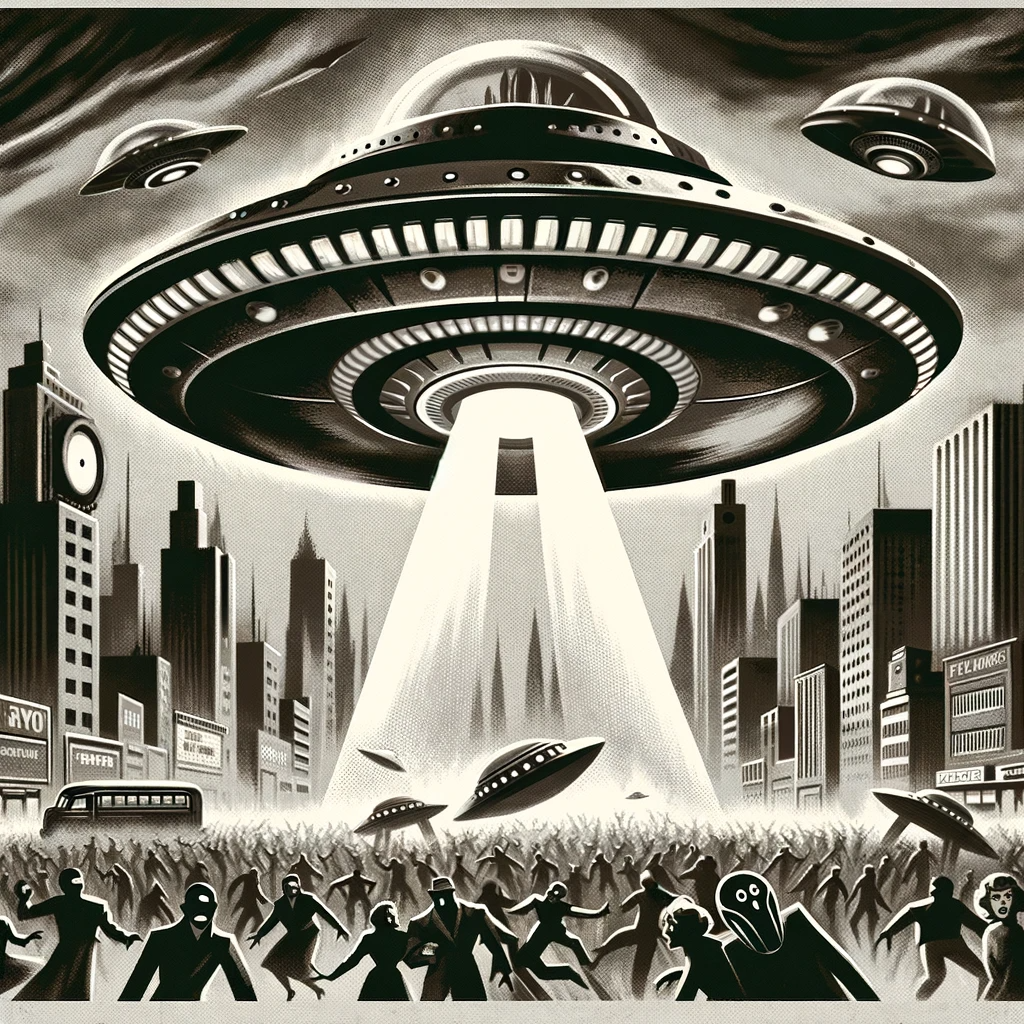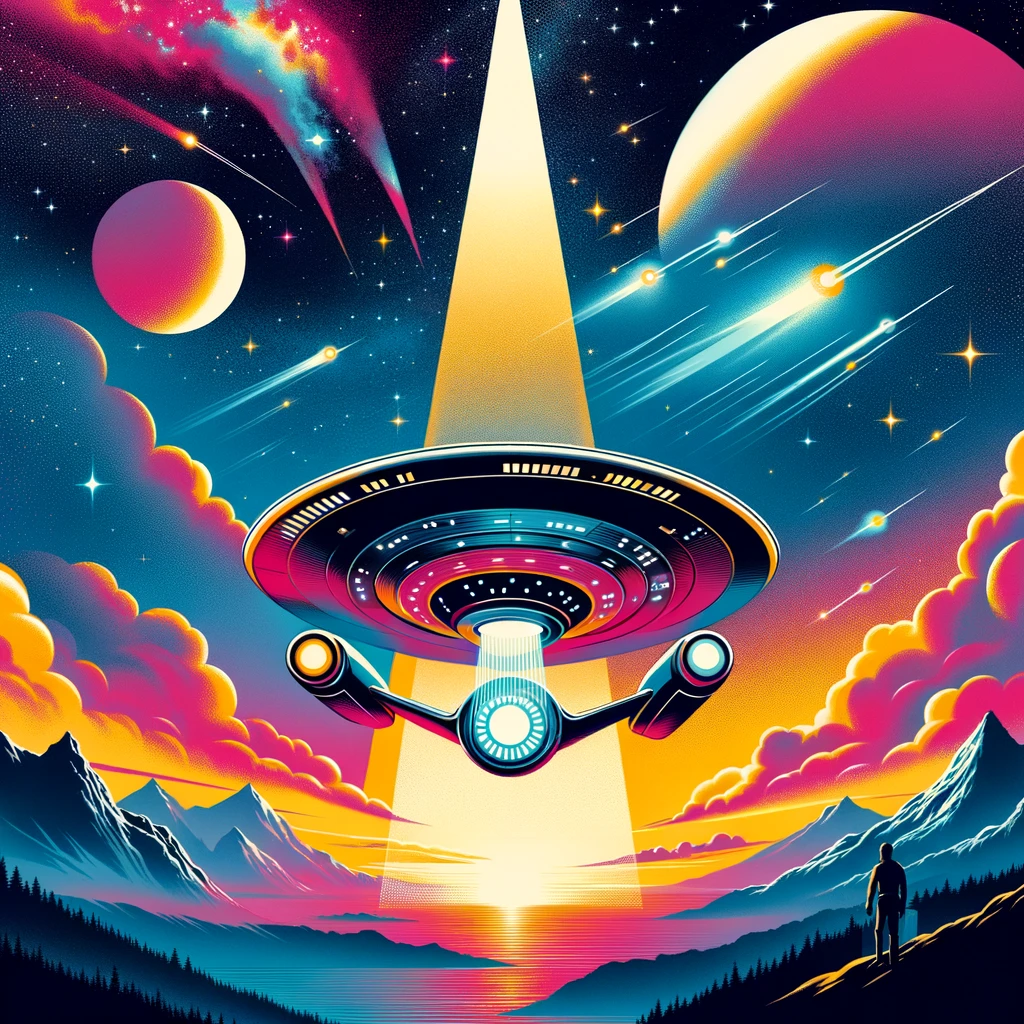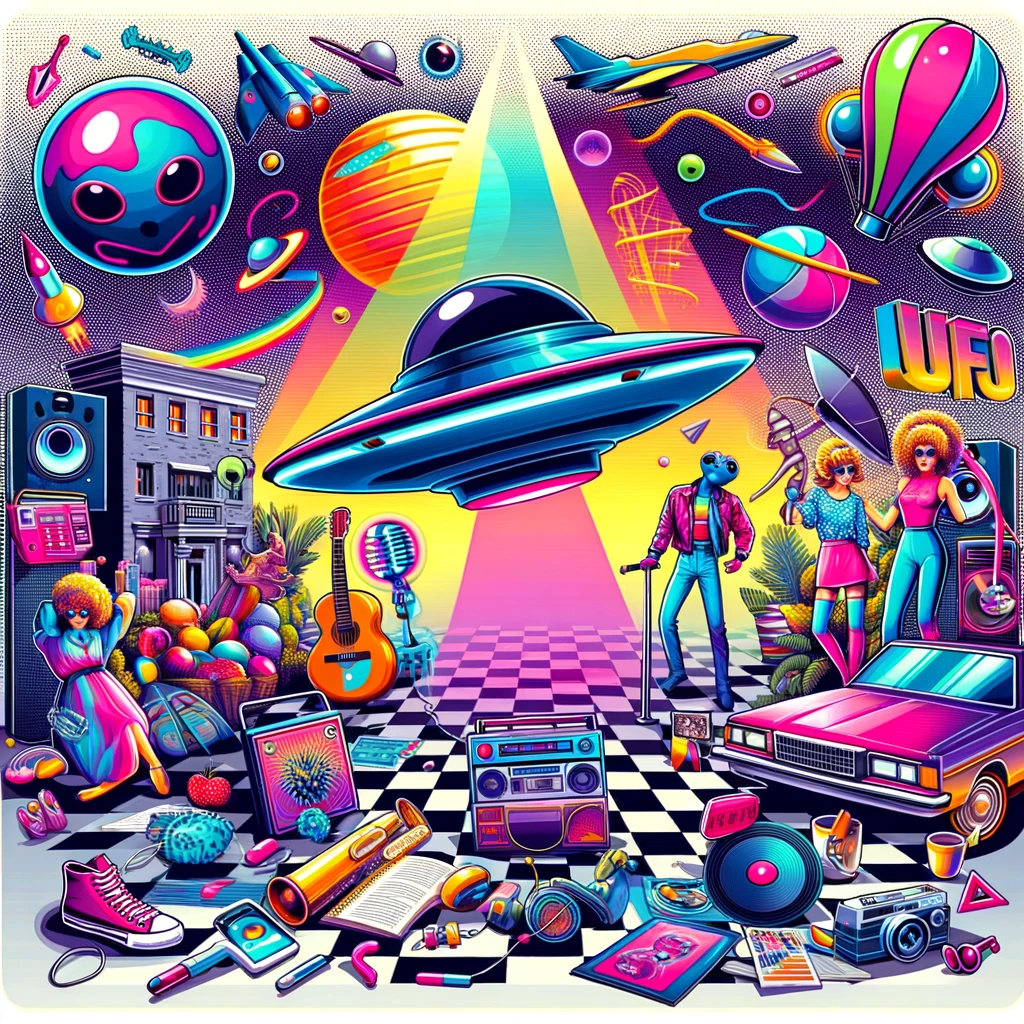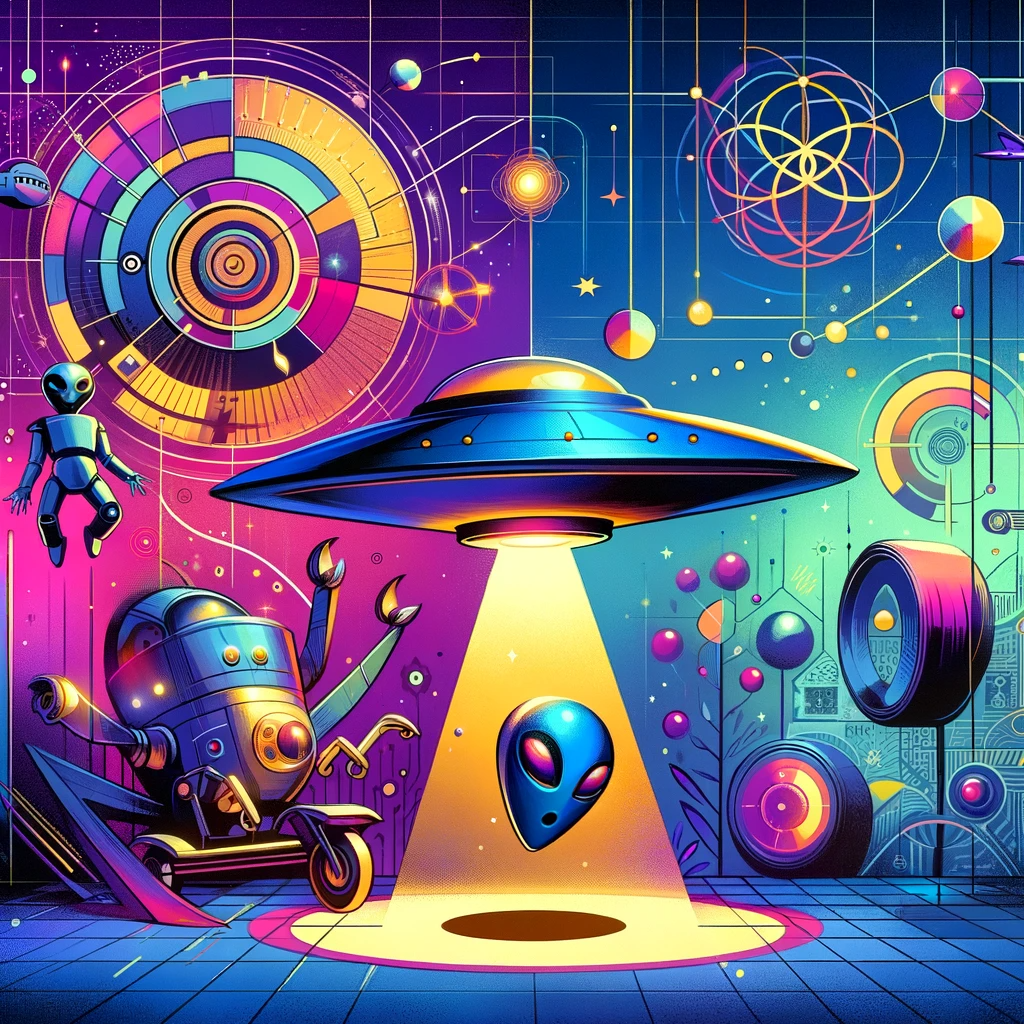Flying Saucers to the Silver Screen: The Evolution of UFOs in Pop Culture
Unidentified Flying Objects (UFOs) have long captivated the human imagination, not just in the realms of science and astronomy but also in the vibrant world of pop culture. From the early days of cinema to the latest TV shows and novels, the depiction of UFOs has evolved significantly, reflecting our changing perceptions, fears, and fascinations about extraterrestrial life and the unknown.

The Early Years: Fear and Wonder
In the early 20th century, when cinema was in its infancy, UFOs in pop culture were primarily vehicles of mystery and fear. This was the era of Cold War anxieties, and films like “The Day the Earth Stood Still” (1951) and “War of the Worlds” (1953) mirrored societal fears of invasion, both terrestrial and extraterrestrial. These early representations were often of hostile alien invasions, with UFOs depicted as advanced and threatening.

The 60s and 70s: A Shift to Curiosity and Hope
As space exploration expanded in the 1960s and 70s, so did the portrayal of UFOs in pop culture. The fascination with space led to a more nuanced depiction of UFOs and aliens. Television shows like “Star Trek” (1966) and movies like “Close Encounters of the Third Kind” (1977) showcased UFOs as vessels of advanced civilizations that were not necessarily malevolent, but rather mysterious and awe-inspiring.
The 80s and 90s: Mainstream Appeal and Diverse Narratives
In the 1980s and 1990s, UFOs became a staple of mainstream entertainment. The “Star Wars” franchise, although more space fantasy than a direct depiction of UFOs, captured the public’s imagination with its intergalactic adventures. “E.T. the Extra-Terrestrial” (1982) presented a friendly and emotional portrayal of alien encounters, while “The X-Files” (1993) TV series brought UFOs and alien conspiracies into living rooms, blending science fiction with detective drama.

The 21st Century: Realism and Parody
In recent years, the portrayal of UFOs has taken a more realistic and sometimes even satirical turn. Films like “District 9” (2009) and “Arrival” (2016) offered a more grounded, almost plausible take on extraterrestrial encounters. On the other hand, shows like “Rick and Morty” (2013) playfully parody and deconstruct classic UFO and alien tropes, reflecting a more self-aware and humorous approach to the topic.
Literature and UFOs
In literature, UFOs have been a recurring theme in science fiction. From the classic works of Arthur C. Clarke and H.G. Wells to contemporary authors like Cixin Liu, UFOs have been used as plot devices to explore complex themes such as identity, technology, and the human condition.

The journey of UFOs in pop culture is a testament to their enduring appeal and the human fascination with the unknown. From menacing invaders to symbols of hope and curiosity, their portrayal has evolved alongside our own understanding and imagination. As we continue to gaze up at the night sky, UFOs remain a compelling narrative device, inspiring awe, wonder, and endless possibilities in the world of pop culture.
